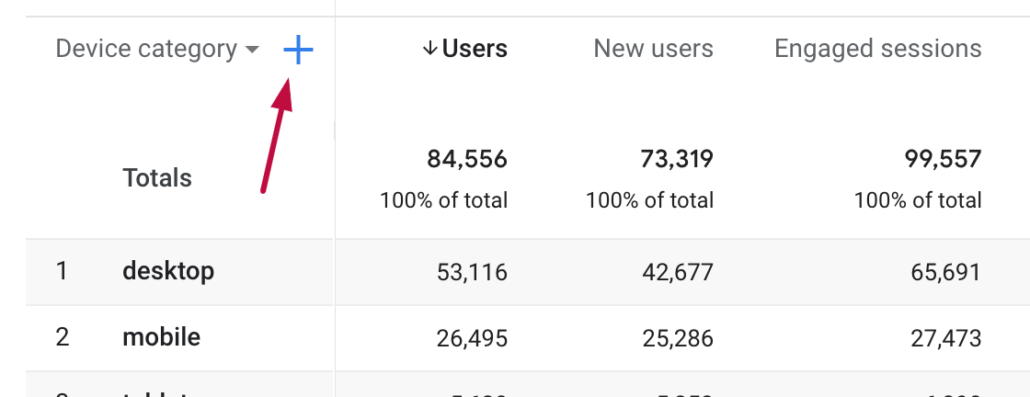Transform Your Analytics Method With Additional Dimension in Google Analytics
By incorporating additional dimensions right into information evaluation, a brand-new layer of insights arises, dropping light on detailed customer habits and communications. The tactical application of second dimensions holds the key to opening a prize trove of invaluable details that can reinvent just how businesses translate and act upon their data.
Recognizing Secondary Dimensions in Google Analytics
Secondary dimensions in Google Analytics offer additional context to key data by enabling individuals to assess metrics throughout a second dimension, providing deeper insights into customer habits and communications on an internet site. Secondary Dimension in Google Analytics. While main measurements provide fundamental information factors such as pageviews, bounce rate, and session duration, additional measurements use an even more thorough view by segmenting the main information even more. This segmentation allows users to examine metrics in combination with an additional dimension, such as traffic sources, demographics, or user actions
Advantages of Using Additional Measurements
Utilizing secondary dimensions in Google Analytics supplies a strategic advantage by improving the depth of evaluation and offering a more comprehensive understanding of customer communications and behavior on an internet site. By including additional measurements, analysts can gain valuable understandings into the performance of specific sections or variables within their information. This allows a more detailed examination of user habits past surface-level metrics, allowing for a deeper expedition of the variables affecting individual engagement and conversions.

Exactly How to Apply Additional Measurements
When incorporating second dimensions in Google Analytics, one important step is to pick the appropriate metrics and measurements to improve the analysis procedure. Clicking on this button will open a drop-down menu listing various measurements that can be included to your key dimension for much deeper insights.
After picking the appropriate additional dimension, such as 'Source/Medium' or 'Tool Group,' Google Analytics will certainly show the data in a much more thorough format, permitting you to cross-analyze various elements of individual behavior. Keep in mind to trying out different mixes of second and key dimensions to discover useful patterns and trends that can inform your marketing methods. By executing secondary dimensions attentively, you can get a more detailed understanding of your website or app performance and make data-driven choices to enhance your digital existence.
Studying Information With Additional Dimensions
Boost your data evaluation in Google Analytics by including additional measurements to dig deeper right into user habits patterns and enhance your digital marketing techniques properly - Secondary Dimension in Google Analytics. By adding second dimensions to your main data, you can acquire important understandings that can help you make notified decisions about your web site or app efficiency
Examining data with additional dimensions allows you to segment your main data better, giving an extra extensive view of customer interactions. As an example, combining the main dimension of 'source/medium' with a second measurement like 'touchdown web page' can reveal which details web pages are driving website traffic go to my blog from different resources. This information can be important in improving your material technique navigate here or maximizing your marketing campaign to enhance conversions.
In addition, utilizing second measurements enables you to determine correlations in between different metrics, helping you recognize the impact of numerous aspects on user actions. Whether it's evaluating demographics alongside customer interaction metrics or device groups with conversion rates, secondary dimensions equip you to reveal concealed fads and patterns that can lead your marketing efforts.
Maximizing Performance With Second Measurements
To enhance the performance of data evaluation and decision-making in Google Analytics, incorporating second dimensions is essential to enhancing efficiency metrics and obtaining deeper understandings right into individual habits patterns. By making use of second measurements, analysts can dive past surface-level information and discover beneficial correlations that may otherwise go unnoticed. This optimization method makes it possible for companies to tailor their advertising and marketing initiatives more successfully, identify areas for enhancement in website functionality, and enhance total customer experience.
Second dimensions supply an even more detailed sight of individual interactions by giving additional context to primary data metrics. Matching the key measurement of 'touchdown page' with a secondary measurement like 'device classification' can reveal whether certain devices are extra most likely to drive involvement on specific landing web pages. This insight can notify receptive design enhancements or targeted advertising strategies to enhance performance.

Final Thought
Finally, the assimilation of second dimensions in Google Analytics provides companies with an effective tool to enhance their analytics method. Secondary Dimension in Google Analytics. By delving deeper right into individual behavior and communications, online marketers can uncover beneficial insights that can drive performance optimization and improve the overall individual experience. Leveraging second measurements enables an extra extensive analysis of information, causing even see this more educated decision-making and tailored advertising and marketing initiatives
Secondary dimensions in Google Analytics supply extra context to main information by allowing customers to assess metrics across a 2nd measurement, using deeper understandings into user actions and interactions on an internet site. While key measurements provide fundamental data factors such as pageviews, bounce rate, and session duration, second measurements supply a more in-depth view by segmenting the key data further.One of the crucial benefits of using additional measurements is the ability to discover correlations and patterns that may not be quickly evident when assessing data with primary dimensions alone.When including secondary dimensions in Google Analytics, one important action is to choose the appropriate metrics and dimensions to improve the evaluation process. Coupling the key measurement of 'touchdown page' with an additional measurement like 'device classification' can expose whether particular tools are a lot more likely to drive involvement on specific touchdown web pages.